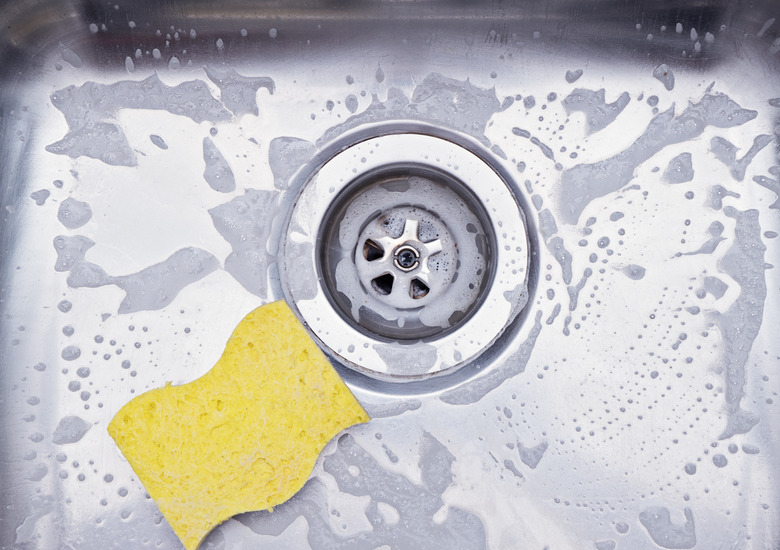Can You Pour Bleach Down The Sink?
Bleach has very little value as a drain cleaner and is no substitute for caustic or acidic chemicals to clear a clog. Some plumbers do recommend an occasional bleach treatment to sanitize the drain and kill organisms that cause drain odor. And, of course, the sink is the first place most people think of for disposal of cleaning solutions containing bleach. Pouring bleach down the drain is problematic, though, especially if the house has a septic tank.
Putting Bleach Down the Drain Can Be Dangerous
Putting Bleach Down the Drain Can Be Dangerous
When you pour a bleach solution into your drain, most of it goes into the waste line and sewer, but a small yet significant amount remains in the P-trap until you flush it away by pouring other liquids into the sink. If any of these liquids contain other cleaning chemicals, you could have a serious problem. Bleach combines with some chemicals, especially ammonia, to create toxic fumes.
Consider what could happen when a sink is used by more than one person. Person one pours bleach down the drain and then goes out of the house while person two comes along, cleans the counters with ammonia and pours the cleaning water down the drain. This releases poisonous chloramine gas that wafts throughout the kitchen and can make someone sick even if they didn't use the sink at all.
The fumes can also circulate through the plumbing pipes, and although the P-traps in other drains will prevent the gas from coming out of those drains, the gas can exit the system through the vents and broadcast it into the air around the house. Chloramines are harmful even in small amounts, especially for elderly people and children.
Bleach is Bad for Septic Systems
Bleach is Bad for Septic Systems
Bleach kills bacteria, which is why it's a good disinfectant. Your septic tank is full of bacteria, but they're beneficial ones, and without them, your septic system won't work. The bacteria digest the waste you put into the tank, and if you kill them with bleach, the undigested waste will just clog the system.
A small amount of bleach probably won't do much harm, and a small amount is about a gallon of cleaning solution no more often than once a week. If you have bleach tablets in your toilet, though (which you shouldn't have if you're on a septic system), the tank is already getting a steady stream of bleach, so you shouldn't add more by pouring it into the sink drain.
How to Disinfect the Drain and Bust Clogs
How to Disinfect the Drain and Bust Clogs
Bleach has little to no ability to dissolve debris in the drain, so if you have hair in the shower drain, bleach won't make it go away. In fact, pouring bleach into a clogged drain is dangerous because it just sits in the pipes and could react with other cleaning chemicals.
Commercial drain cleaners typically contain caustic soda, but you seldom need to put caustic soda in the sink. You can bust most clogs by plunging, and if that doesn't work, all you usually have to do is disassemble the P-trap and clean it. If you prefer to use a drain cleaner, try the vinegar/baking soda foam bomb:
- Pour 1/2 cup of baking soda down the drain.
- Follow this with about 1/2 gallon of a 50/50 solution of vinegar and boiling water. The combination releases a cleansing carbon dioxide foam that will spurt out of the drain like a volcano.
- Wait for the foam to subside, then pour another half gallon of boiling water into the drain.
If you're looking for a way to disinfect the sink drain, try one of these alternatives to bleach:
- Hydrogen peroxide
- Straight vinegar
- Baking soda
- Tea tree oil
- Lemon juice
